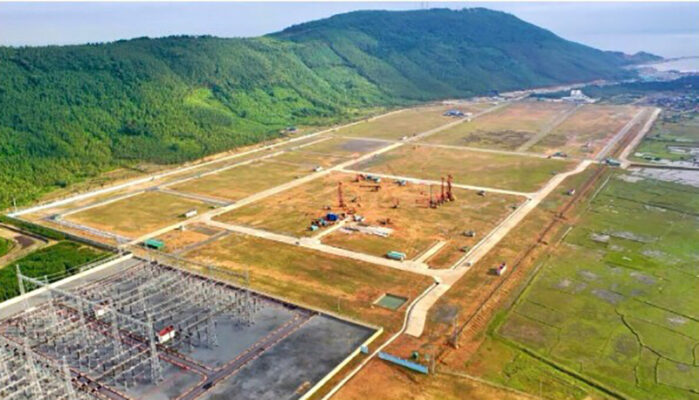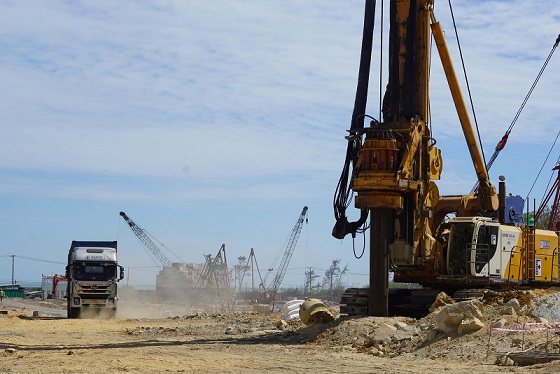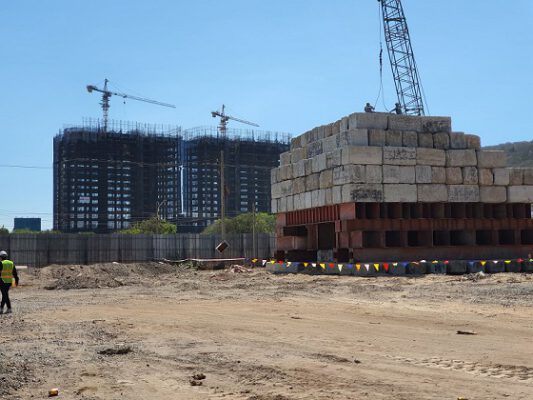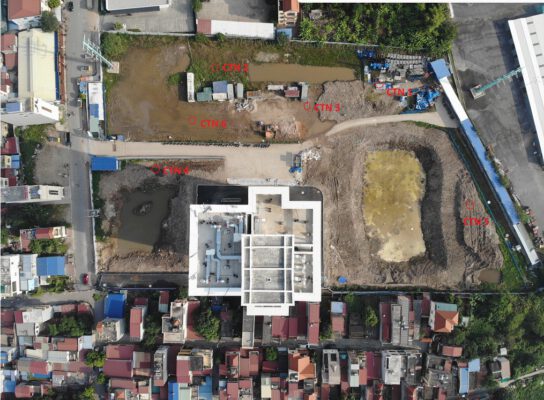The foundation is the thickness of the layer of soil and rocks beneath the bottom of the structure. It is responsible for absorbing the load of the structure above it that is transmitted down to distribute the load into the foundation.
The foundation of a construction project is a structural component located below the load-bearing structure such as columns and walls. The foundation is responsible for absorbing the load from the construction project and transmitting it down to the foundation for distribution.
Therefore, it can be said that the foundation is the first and extremely important step in ensuring the construction and quality and lifespan of projects. Especially for critical projects, super-sized projects, careful attention, high technical expertise, and complexity are required in constructing the foundation to ensure that the project will have good quality, stable operation over a long period, and withstand heavy loads.


Let’s go over some important notes to keep in mind when constructing foundations in “mega-projects” in the article below.
- Geological survey of the project site
The geological survey of the construction site helps construction units to develop a plan for handling soil and water that is suitable and provides the most optimal, high-quality, cost-effective, and reasonable construction solution.
According to foundation experts, the geological survey work of the project has a very important meaning in providing essential information for:
- Assessing the suitability of the environment and location for the planned construction project in detail.
- Identifying changes in the geological environment due to human economic and construction activities, and the impact of these changes on the construction itself as well as neighboring constructions.
- Selecting and designing optimal, reasonable, and cost-saving foundation solutions for the project.
- Proposing appropriate and effective construction methods while predicting the difficulties and obstacles that may arise during construction.
- Accurately evaluating the safety level of existing constructions, designing the renovation and upgrading of existing constructions, and researching cases that have caused damage to constructions.


- Foundation design
Based on the survey results, we will come up with a foundation design that meets quality requirements such as: being suitable for the architecture, mechanical and electrical systems, structural body, construction conditions, and feasible for construction measures for the foundation/substructure.
In addition, the foundation design needs to ensure that all design steps are fully and correctly implemented, from material selection to mechanical calculation, structural analysis, etc.


Below are some notes on safety in building foundation design:
- Determine the load: The first important thing in foundation design is to determine the load of the construction and the load of the ground. When determining the load, other factors need to be considered such as the impact of earthquakes and other environmental factors.
- Choose the appropriate foundation type: Depending on the geological conditions and the load of the construction, choose the appropriate type of foundation, including concrete foundation, drilled pile foundation, raft foundation, etc.
- Ensure stability: Foundation design must ensure the stability of the construction, especially in the event of earthquakes or changes in the environment.
- Use high-quality materials: Use high-quality materials to ensure the safety and durability of the construction.
- Use safety equipment: Use safety equipment such as protective equipment, safety harnesses, etc. to ensure the safety of workers during foundation construction.
- Check design quality: Ensure that the designs have been quality checked and approved by relevant experts before starting construction.

- Construction
The construction process needs to ensure the following requirements:
- Use high-quality materials to build the foundation. This is particularly important for heavy-duty projects, as large loads will impact the foundation, and using low-quality materials may pose a danger.
- Ensure that construction vehicles, machinery, and tools used in the construction process meet technical and safety requirements. Equipment and vehicles need to be regularly checked and maintained to ensure that they operate efficiently and safely.
- Conduct regular quality checks to ensure that the foundation is built according to the process and meets technical requirements. If any errors are detected, they should be repaired immediately to ensure the stability and safety of the project.
- Pay attention to weather conditions, especially in areas with harsh climates. If there are any signs of bad weather or difficult environmental conditions, the construction process should be temporarily halted to ensure safety.


 VN
VN CN
CN KR
KR JP
JP